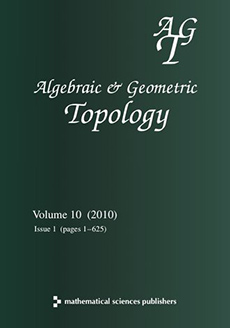Abstract
Cofiltered diagrams of spectra, also called pro-spectra, have arisen in diverse areas, and to date have been treated in an ad hoc manner. The purpose of this paper is to systematically develop a homotopy theory of pro-spectra and to study its relation to the usual homotopy theory of spectra, as a foundation for future applications. The surprising result we find is that our homotopy theory of pro-spectra is Quillen equivalent to the opposite of the homotopy theory of spectra. This provides a convenient duality theory for all spectra, extending the classical notion of Spanier-Whitehead duality which works well only for finite spectra. Roughly speaking, the new duality functor takes a spectrum to the cofiltered diagram of the Spanier-Whitehead duals of its finite subcomplexes. In the other direction, the duality functor takes a cofiltered diagram of spectra to the filtered colimit of the Spanier-Whitehead duals of the spectra in the diagram. We prove the equivalence of homotopy theories by showing that both are equivalent to the category of ind-spectra (filtered diagrams of spectra). To construct our new homotopy theories, we prove a general existence theorem for colocalization model structures generalizing known results for cofibrantly generated model categories.
Citation
J Daniel Christensen. Daniel C Isaksen. "Duality and Pro-Spectra." Algebr. Geom. Topol. 4 (2) 781 - 812, 2004. https://doi.org/10.2140/agt.2004.4.781
Information





